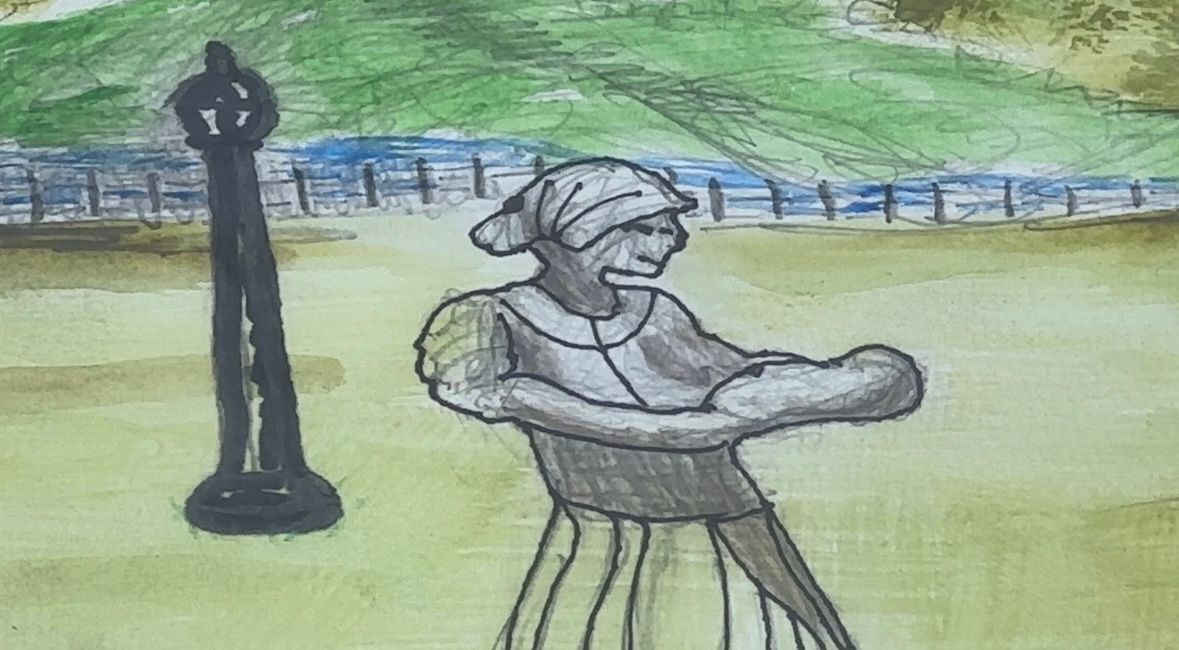A 12-foot-tall statue honoring Maine’s most famous midwife, Martha Ballard, is in the works and scheduled for an October unveiling.
Larry Fleury, chairman of an Augusta committee created to honor Ballard, said he and others spent more than three years planning and fundraising for the project.
Ultimately, they raised about $80,000 through cash and in-kind donations to pay for a monument to honor Ballard, who delivered more than 800 babies in towns along the Kennebec River in the late 1700s and early 1800s.
Fleury said the city has long had plans to pay tribute to Ballard in Mill Park, which sits on the banks of the river north of the downtown.
“Martha did something incredible that no other woman did at the time, write her daily diary,” Fleury said. “Every day for almost 30 years she wrote a little something about her life and her job as a midwife in Augusta.”
Ballard’s story became widely known following the 1990 publication of “A Midwife’s Tale” by Laurel Thatcher Ulrich. The book is based on Ballard’s diary entries from 1785 to 1812.
And while Ulrich provides context to the entries with other historical data and research, she also includes many of the diary entries themselves.
In the introduction, Ulrich explains that Ballard rarely used punctuation and like other diarists in the late 18th century, she “capitalized randomly, abbreviated freely, and spelled even proper names as the spirit moved.”
Here’s a sample from May 1809: “I was Calld by Mr. Caton at 2 hour 30 m this morning to go and see his wife. I arrivd there at sun rise. Found her delivard of a son, her 11th Child, but not safe. I performd what was necessary and left her as Comfortable as Could be Expected. Arrivd home before ten and sent herbs and other matters.”
Between 1785 and 1812, she delivered 816 babies, crisscrossing the Kennebec River in a canoe or arriving to the homes of expectant parents on horseback. She describes how one time her cloak got too close to a fire “so that it is not wearable” and everyday tasks such as knitting.
Ulrich writes that Ballard also made medical calls, helped prepare bodies for burial, dispensed pills and tended to her own family. She gave birth to nine children in 16 years, three of whom died of diphtheria.
“In twentieth-century terms, she was simultaneously a midwife, nurse, physician, mortician, pharmacist, and attentive wife,” Ulrich wrote. “Furthermore, in the very act of recording her work, she became a keeper of vital records, a chronicler of the medical history of her town.”
When it comes to honoring her, Fleury said because there are no pictures or paintings of Ballard, the statue will be of what they believe to be her likeness.
“It’s going to give you a feeling but it’s also going to be very whimsical,” he said. “It’s going to be 12 feet tall and it’s going to be done with bended aluminum. The bottom of it will be a trellis for vines. The vines will represent the life she brought into the world.”
During a recent update to Augusta City Council, Fleury said the plan is to unveil the statue in mid-to-late October.
Council member Stephanie Sienkiewicz said she’s looking forward to what the new statue will bring to the city.
“This history is so important to our city and to the history of midwifery in general,” she said. “I also am very excited for downtown Augusta to have more artwork. I vividly remember places I’ve been in the world where sculpture has impacted me and feel that emotional pull back to that place. Adding things like this to Augusta is such a gift to our community.”



